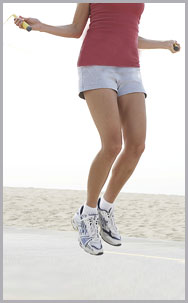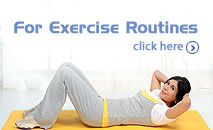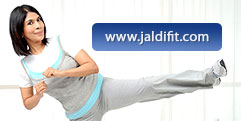 Skipping is convenient and does not require a lot of space or any special equipment. You can carry the rope with you anywhere.
Skipping is convenient and does not require a lot of space or any special equipment. You can carry the rope with you anywhere.
Skipping workouts not only condition the body but also provide excellent cardiovascular and fat burning benefits in minimal time. Many boxers and athletes use it as a part of their training routine. Tennis champ, Jimmy Connors used to skip rope as part of his conditioning routine.
Rope jumping requires skill. With practice this skill improves, and then you don’t need to jump as high to get over the rope. Also, in time, the arm and overall body movements become more efficient.
A beginner works at 85 percent of his maximum energy capacity, while an experience skipper may be cruising along at only 40 percent of his energy capacity, and also skipping a lot faster.
Rope Length
If the rope touches the feet while you are skipping, it means the rope is too short. If it touches the ground, it is too long. To determine the correct length of the rope, place the center of the rope under one foot. Stand up straight. Then with your arms against your sides, bring hands to your shoulders while pulling the rope tight. This should be the length of the rope suited for you. The ends of the rope have handles or a knot, to make it easy to hold while skipping.
Why skip?
Skipping strengthens the muscles of the legs, abdomen, back and arms with its circular rhythmic movement. It is an excellent exercise for the heart and lungs, and is considered one of the most efficient workouts to increase cardiovascular fitness.
Benefits
A skipping program improves:
- Cardio respiratory fitness
- Mobility and co-ordination
- Agility and balance
- Timing, rhythm and speed
- Lean body mass and muscle strength
- Bone density
- Skill
Safety guidelines
-
Wear supportive cross-trainers, tennis or basket ball shoes while skipping.
-
Avoid jumping on floors laid over concrete and other hard surfaces. If you don’t have a wooden or carpeted floor, place a thin exercise mat on whatever surface you have access to.
-
Stretch all major muscle groups, especially your calves.
Caution
-
Skipping can place considerable stress on the feet, ankles, knees and back.
-
Always allow a day’s rest between skipping workouts, to avoid undue strain on the joints.
-
This activity is not recommended for anyone with weak knees or any kind of back problem.
Skipping routines
-
Skip for 200 counts, while your partner jogs. Switch activities. Repeat 5 times.
-
Skip 150 counts at a slow speed, the next 50 counts skip as fast as you can. Repeat thrice. Try to compete with your partner when you are increasing skipping speed.
The next two routines combine skipping with strength exercises to provide for a greater challenge:
-
Skip for one minute, while your partner does crunches. Switch activities. Repeat. Skip for one minute, while your partner does 16 push-ups. Switch activities. Repeat.
-
Skip for 250 counts. Do 16 sit-ups. Do 16 push-ups. Do a16 squats. Repeat this sequence twice or thrice. Do this routine in tandem with your partner.
- Benefits of Exercise
- Exercise and the Heart
- Exercise and the Bones
- Exercise and Hypertension
- Exercise Excuses and how to beat them
- Over Exercising is bad for you
- Kids gotta Exercise too!
- What is Obesity
- Fitness Triangle
- Running, Skipping and Cycling
- Walking
- Swimming
- Common Fitness Myths
- Evaluate your Fitness Quotient
- Wellness Tools and Charts



